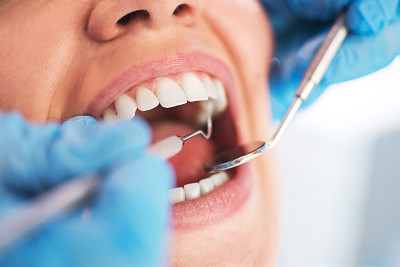The Essential Guide to Understanding the Process and Care Involved When You Need to Extract a Tooth
Summary: Extracting a tooth can be a daunting experience, but understanding the process and care involved can help alleviate anxiety and ensure optimal recovery. This guide outlines the essential steps from identification of the need for extraction, the actual procedure, post-operative care, to potential complications. With comprehensive insights into each stage, patients can feel more prepared and informed about their dental health choices. Being proactive in understanding this process can lead to a smoother experience and promote better healing outcomes after a tooth extraction.
1. Recognizing the Need for Tooth Extraction

Tooth extraction is often necessary due to various dental issues. Common reasons include severe tooth decay, gum disease, overcrowding, or a tooth that is impacted. Recognizing symptoms such as tooth pain, swelling, or persistent infections can be the first step in deciding to consult a dentist about extraction.
Consultations with a dental professional play a crucial role in this decision. Dentists will assess the tooths condition through examinations and possibly X-rays. They will provide recommendations based on the potential for saving the tooth versus the need for removal.
Understanding the underlying reasons for extraction helps to prepare patients for the procedure. Patients should not hesitate to ask questions about the process, as this knowledge reduces anxiety and promotes better decisions regarding their dental health.
2. The Process of Tooth Extraction Explained
Once it is determined that a tooth needs to be extracted, the next step is the actual procedure. The extraction can be classified into two types: simple and surgical. A simple extraction is performed on teeth that are visibly above the gum line, while surgical extraction may be necessary for teeth that are broken or impacted.
Before the extraction, patients will receive local anesthesia to numb the area surrounding the tooth. In some cases, sedation may be used to help the patient relax. The dentist will then use specialized instruments to loosen the tooth from its socket. This process may involve using elevators or forceps.
After the tooth is removed, the dentist will clean the area and may place gauze to control bleeding. In some cases, stitches may be required to close the gum tissue. It is essential to follow the dentist’s instructions to ensure optimal recovery after the procedure.
3. Post-Operative Care for Tooth Extraction
Post-operative care is crucial for a successful recovery following a tooth extraction. Patients are typically advised to rest for the first few hours, avoiding physical exertion. Keeping the head elevated can help minimize swelling.
Managing pain and discomfort after the extraction is another focus. Dentists often provide pain relievers or recommend over-the-counter medications. Patients should adhere strictly to the prescribed dosage and instructions to ease their pain effectively.
Dietary recommendations may also change post-extraction. Patients should consume soft foods and avoid anything hot or spicy in the initial days. Hydration is vital, but drinking through a straw should be avoided for the first few days to prevent dislodging the blood clot necessary for healing.
4. Potential Complications and Their Management
While complications are not common after a tooth extraction, being aware of them is essential. One possible issue is dry socket, a painful condition that occurs when the blood clot forming in the extraction site fails to protect the bone and nerves. Symptoms include severe pain a few days post-extraction, which may require further treatment.
Infection is another potential complication. Signs of infection include fever, swelling, or pus discharge from the extraction site. Prompt communication with a dentist is essential if these symptoms arise so they can prescribe antibiotics or perform further interventions as necessary.
Other problems may include prolonged bleeding or difficulty opening the mouth. These issues should be addressed with the dentist as soon as they occur to ensure that the healing process is not compromised.
Summary: Understanding the entire tooth extraction process—from the initial consultation to the post-operative care—can make a significant difference in a patient’s experience. Knowledge empowers individuals to make informed decisions and help facilitate a smoother recovery. Being proactive and prepared will inevitably lead to improved outcomes following tooth extraction.
This article is compiled by Vickong Dental and the content is for reference only.


